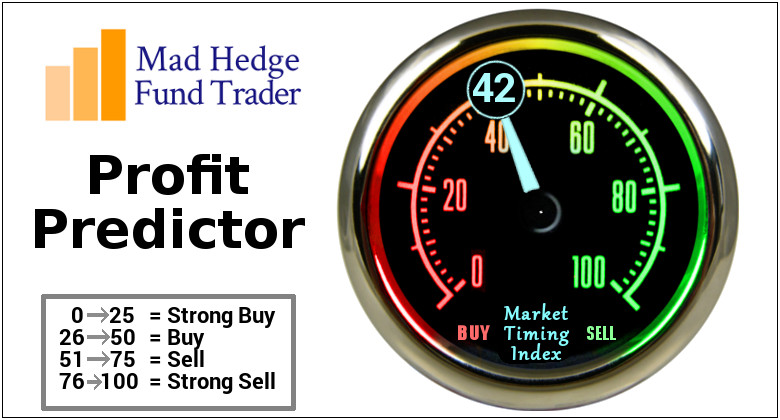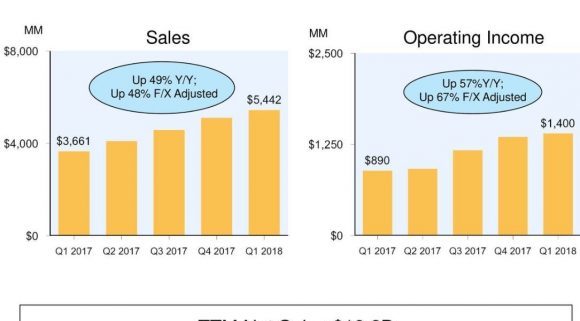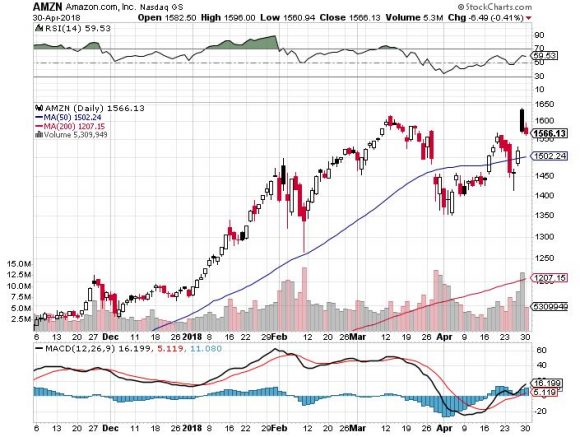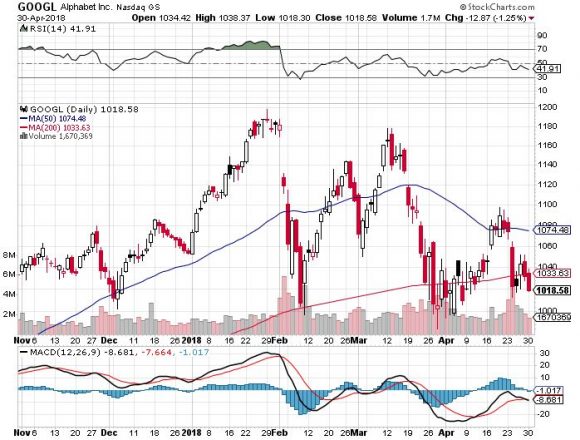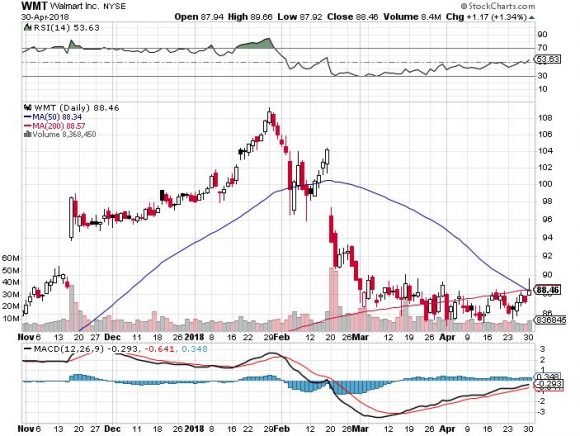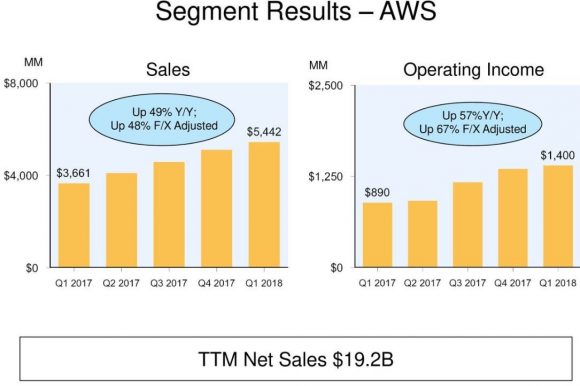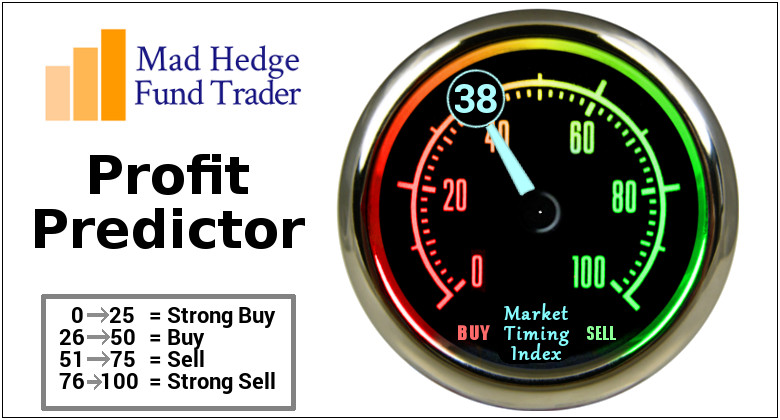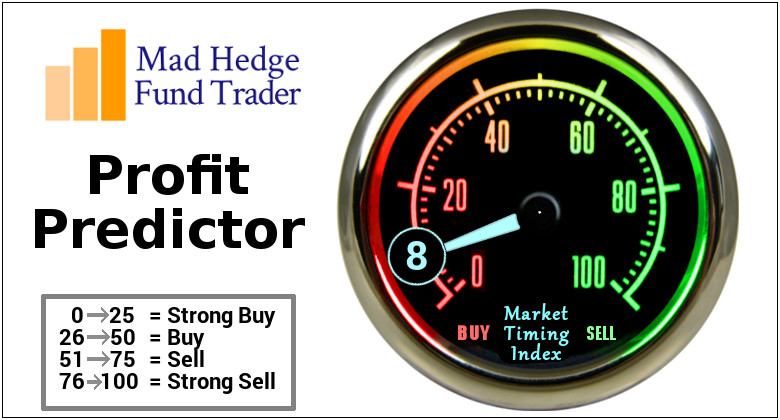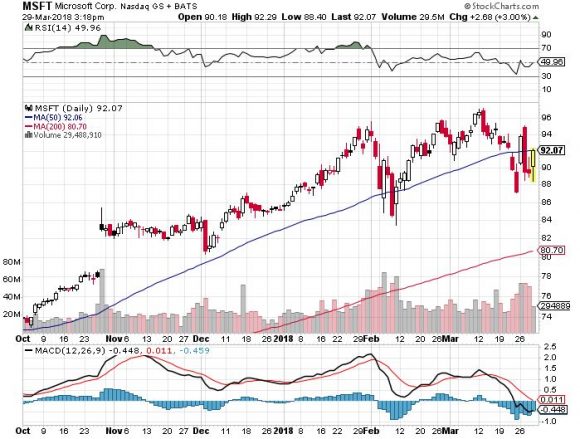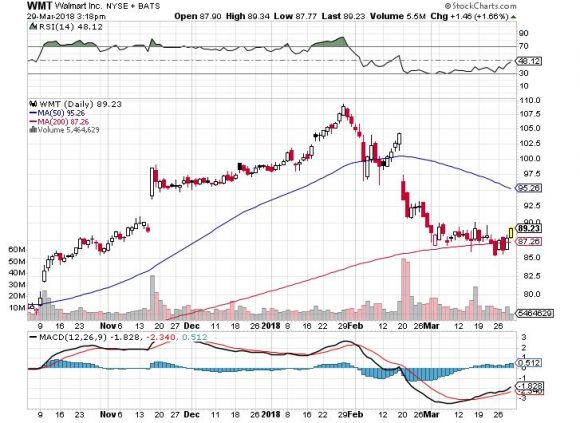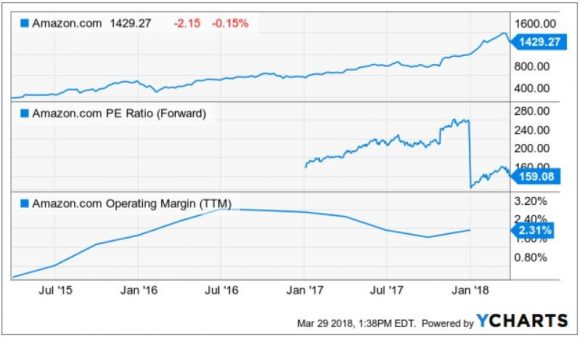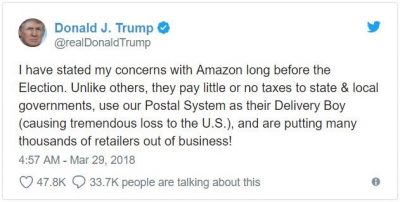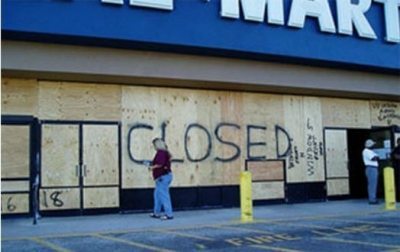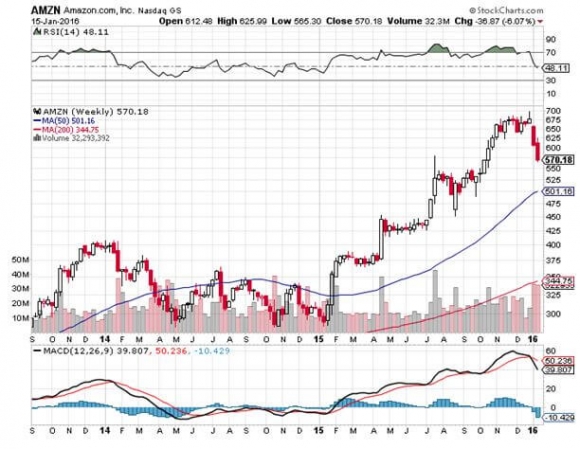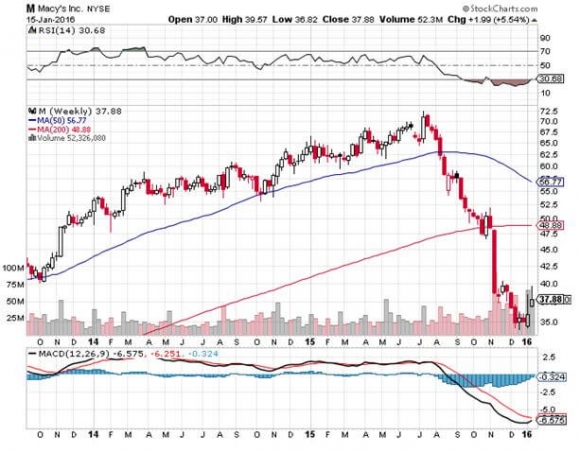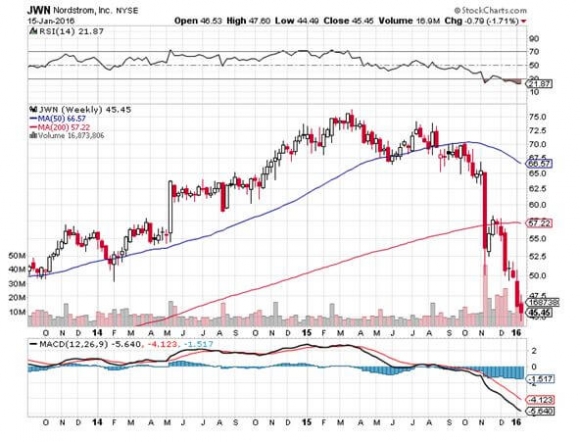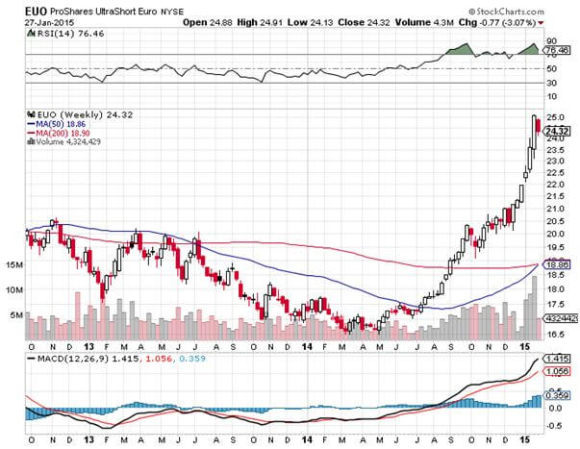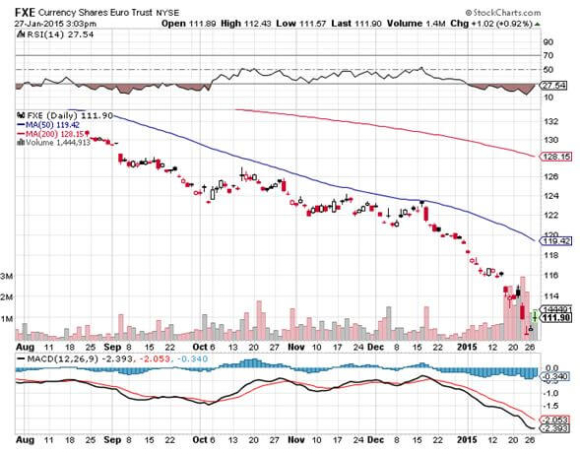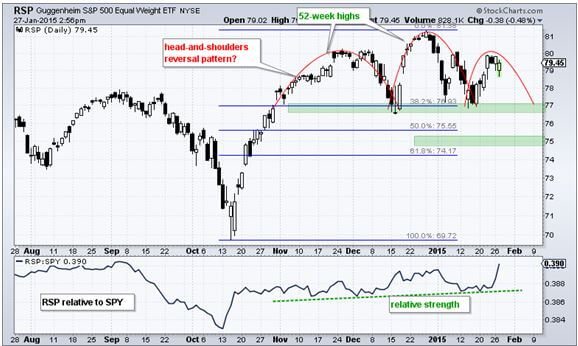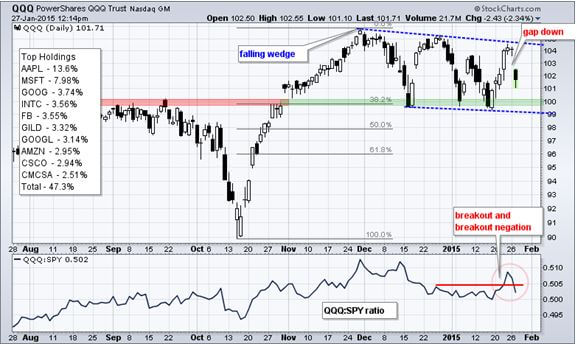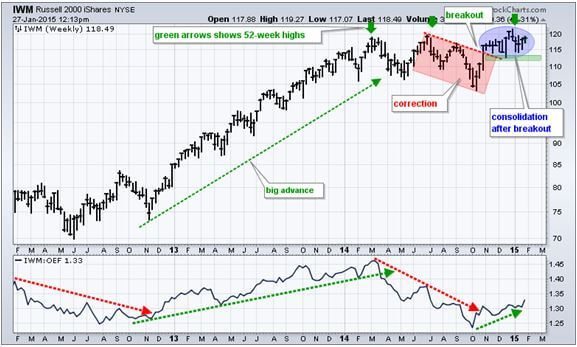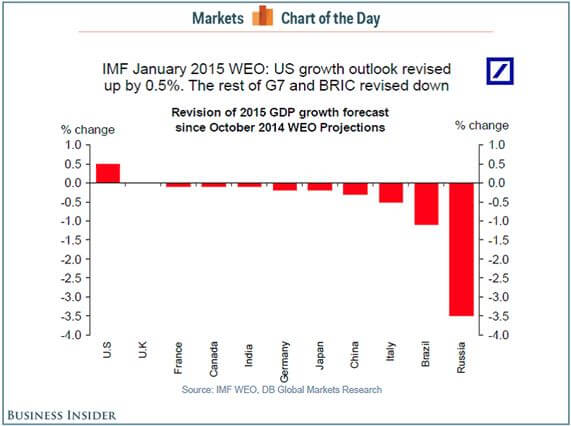Mad Hedge Technology Letter
May 1, 2018
Fiat Lux
Featured Trade:
(AMAZON KILLS IT AGAIN),
(AMZN), (WMT), (FB), (TGT), (GOOGL)
Posts
Jeff Bezos is a god.
Well, not quite but he is turning into one after Amazon delivered a mythical earnings report that left Amazon haters in awe.
The Amazon bears patiently waiting for the day of reckoning will have to wait longer as Amazon smashed earnings expectations by a magnitude of two or three.
Amazon had a lot riding on the most recent earnings report after racing to new highs in mid-March.
The brief macro-correction then gave investors yet another entry point into one of the best companies of our generation that is still up more than 30% this year.
Amazon Web Services (AWS) revenue reaccelerated from its 42% growth last year to a high octane 49% YOY and made up a disproportionate 73% of Amazon's operating income.
Amazon is heavily reliant on the AWS segment to carry it through feast or famine.
According to Jeff Bezos, its critically acclaimed cloud segments' outstanding results originate from the "seven-year head start before like-minded competition."
This reaffirms the benefit of first-mover advantage with which large cap tech is obsessed.
There is room for other companies in the cloud space, with the cloud industry expanding 20% in 2018 to $186 billion.
Therefore, expanding by 20% is the bare bones minimum to be considered relevant.
Amazon has positioned itself to funnel in the most dollars that migrate toward the cloud as the industries pioneer and best of breed.
After the latest earnings report, Amazon is in pole position to become the first publicly traded $1 trillion company.
This latest quarter wrapped up its 62nd consecutive quarter of 20% plus growth.
And the commentary coming out of the earnings reports makes it almost certain that Amazon will capture more market share.
There were a few bombshells dropped that were unequivocal positives for investors.
First, Amazon has become the third player in digital ad industry with the duopoly of Google search and Facebook.
Amazon revved up its digital ad revenue by 139% QOQ to a substantial $2.03 billion per quarter business.
This business is particularly appetizing because of its high margins and will help alleviate tight margins on the e-commerce side.
Amazon's digital ad business is by far the fastest growth lever in its portfolio. It will ramp up this side of the business whose main function is to match consumers with suitable products that consumers otherwise would miss out on in a standard Amazon search.
The extraordinary numbers support the notion that the hoopla of Washington regulation is all bark and no bite.
Facebook also delivered a prodigious quarter for the ages amid testimony and public backlash that resulted in immaterial damage to top- and bottom-line numbers.
The second bombshell announced was the change in pricing to prime members. Amazon upped its annual prime membership to $119 from $99.
This additional $20 price hike, or 20% on 100 million prime members, will swell revenue by an extra $2 billion of incremental revenue.
In total, Amazon will accrue a bonus of 4% of revenue by this price change.
Amazon has a high fixed-cost business, and slightly tweaking prices will create a huge windfall with the revenue almost entirely flowing down to the bottom line in the form of pure profit.
Many industry analysts claim that Amazon has the best management team in the industry and explicate this company as an "Internet staple."
More than 100 million products are delivered with free shipping for Amazon prime customers. This is starkly higher than the 20 million products shipped for free in 2014.
Amazon does everything in its power to offer a unique and efficient experience for customers.
The customer satisfaction reveals itself by the rock-bottom churn rate.
Amazon prime at an annual cost of $119 is such a value that no analysts even dared to ask Amazon CFO Brian Olsavsky if consumers would take issue with the rise in price.
Investors and strangers alike assume that broad-based reoccurring revenue from annual prime membership is a given.
In an era of mass-scrutinization, Amazon's earnings call seemed like a celebration of the mythical achievements that are changing consumer behavior by the day.
The lack of inquiry was justifiable this time because the one major shortcoming suddenly remedied itself.
Amazon's doubters frequently attack the lack of margin growth because its business model is first and foremost a land grab for market share ignoring any remnants of margin stability.
Now that Amazon's digital ad business has sprouted up, the margin story, starting from a miniscule base, will go from weakness to an unrelenting success.
Amazon started with its ultra-thin margin e-commerce business that made an operating loss of $160 billion in 2017.
Cranking up a shiny, high margin business will be hard for the other FANGs to compete with as they gyrate toward other businesses that have lower margins than Amazon's digital ad segment.
This is a horrible time to start fighting Amazon in price wars as the paradigm shift to quantitative tightening has made the cost of capital demonstrably pricier.
Operating margins almost doubled from 2% to 3.8% on $51 billion of quarterly sales.
This is a huge deal.
Amazon has been continuously harangued for "not making money." Well, that era is over.
Profits, and not only revenue, will start accelerating and Amazon will become the closest thing to a perfect company.
The years and years of plowing cheap capital back into fulfillment center and e-commerce activity gave Amazon a stained reputation for years.
However, as Amazon turns the screws and uses its foundational leverage to capture additional profits, the other FANGs will be forced down the same path ruining operating margins for the other big players.
Amazon telegraphed its quest for market share strategy to investors years ago, and investors understand they are paying for growth and growth only.
That will change now that profits have become a real part of its arsenal.
There is no doubt that Amazon will deploy its profits back into expanding its company because Jeff Bezos knows that if he can grow Amazon's top-line number, investors will follow suit.
Also, spending means improving the products, and Amazon has never hesitated to spend big.
The move into digital ad growth is a warning shot to Facebook and Google. Amazon will mobilize its workforce to take on other business, and anything that is high margin is fair game.
The future looks bleak for retail competitors Walmart and Target, as the contents of the earnings report reaffirms Amazon's unrelenting assault on the retail sector, which is systematically being dissected by Amazon for fun.
Google search and Facebook are in Amazon's crosshairs. Staving off this monster will be hard to do in the long run.
Amazon has a clear path to further market gains, and operating margins are almost at a tipping point.
Revenue is poised to re-accelerate because of the reignition of AWS to a higher growth trajectory.
Shoring up operating margins through a burgeoning digital ad division will only be a boon to earnings in the future.
Amazon is one of the best companies in the world, and any weakness in the stock should be bought and held forever.
_________________________________________________________________________________________________
Quote of the Day
"I do not fear computers. I fear a lack of them," - said writer Isaac Asimov.
Global Market Comments
April 26, 2018
Fiat Lux
Featured Trade:
(WEDNESDAY, JUNE 13, 2018, PHILADELPHIA, PA, GLOBAL STRATEGY LUNCHEON)
(WHY CONSUMER STAPLES ARE DYING),
(XLP), (PG), (KO), (PEP), (PM), (WMT), (AMZN),
(WHY YOUR OTHER INVESTMENT NEWSLETTER IS SO DANGEROUS)
Mad Hedge Technology Letter
April 2, 2018
Fiat Lux
Featured Trade:
(WHY THERE WILL NEVER BE AN ANTITRUST CASE AGAINST AMAZON)
(AMZN), (WMT), (MSFT), (FB), (DBX), (NFLX)
POTUS's Amazon tweet of March 29 has given investors the best entry point into Amazon (AMZN) since the January 2016 sell-off. Since then, the stock has essentially gone up every day.
Entry points have been few and far between as every small pullback has been followed by aggressive buying by big institutional money.
The 200-point nosedive was a function of the White House's dissatisfaction of leaked stories that would find their way into the Washington Post owned by Amazon CEO Jeff Bezos, my former colleague and good friend.
Although there are concerns about Amazon's business model, notably its lack of actual profits, there is no impending regulatory action. And, if there is one company that's in hotter water now, it's Facebook (FB), which inadvertently sells every little detail about your personal life to third-party Eastern European hackers.
Amazon's e-commerce business does not violate the Federal Trade Commission Act of 1914 of "deceptive" or "unfair practices."
The American economy has rapidly evolved thanks to hyper-accelerating technology, and the jobs required to support the modern economy have changed beyond all recognition.
The Clayton Antitrust Act of 1914 addressing harmful mergers that destroy competition hasn't been breached either since Amazon has grown organically.
Analyzing the most comprehensive law, the Sherman Antitrust Act of 1890, which was originally passed to control unions, espouses economic freedom aimed at "preserving free and unfettered competition as the rule of trade."
And, in a way, Amazon could be susceptible, but it would be awfully difficult to persuade the U.S. Department of Justice (DOJ) Antitrust Division and would take a decade.
Amazon's business model will change many times over by the time any antitrust decision can be delivered, or even entertained.
Helping Amazon's case even more is the DOJ interpretation of the three antitrust rules. It is the company's duty to first and foremost protect the consumer and ensure business is operating efficiently, which keeps prices low and quality high. Antitrust laws are, in effect, consumer protection laws.
Amazon's e-commerce segment epitomizes the DOJ's perception of these 100-year-old laws.
The controversial part of Amazon's business model is funneling profits from its Amazon Web Services (AWS) division as a way to offer the lowest prices in America for its e-commerce products.
This strategy has the same effect as dumping since it is selling products for a loss, but it is not officially dumping.
POTUS has usually delivered more bark than bite. The steel and aluminum tariffs went from no exceptions to exceptions galore in less than a week. Policies and employees change in a blink of an eye in the White House.
The backlash is a case of the White House not being a huge admirer of Amazon, but individual government workers probably have Amazon boxes stacked to the heavens on their doorsteps.
It is true that Amazon has negatively affected retail business. It is doing even more damage to traditional shopping malls, which it turns out are owned by close friends of the president. The mom-and-pop stores have disappeared long ago. But Amazon could argue this trend is occurring with or without Amazon.
In addition, Walmart (WMT) was the original retail killer, and it currently is morphing into another Amazon by investing aggressively into its e-commerce division. Does the White House go after (WMT) next?
Unlikely.
Amazon didn't create e-commerce.
Amazon also didn't create the Internet.
Amazon also does pay state and local taxes, some $970 million worth last year.
Technology has been a growth play for years.
Investors and venture capitalists are willing to fork over their hard-earned cash for the chance to own the next Google (GOOGL) or Apple (AAPL).
Many investors do lose money searching for the next unicorn. A good portion of these unicorns lose boatloads of money, too.
Spotify, slated to go public soon, is a huge loss-maker and investors will pay up anyway.
Investors went gaga for Dropbox (DBX), already up 40% from its IPO, and it lost $112 million in 2017.
The risk-appetite is hearty for these burgeoning tech companies if they can scale appropriately.
Should investors be prosecuted for gambling on these cash-losing businesses?
Definitely not. Caveat emptor. Buyer beware.
It is true that Amazon pumps an extraordinary percentage of revenues back into product development and enhancement.
But that is exactly what makes Amazon great. It not only is focused on making money but also on making a terrific product.
The bulk of its enhancement is allocated in warehouse and data center expansion. Splurging on more original entertainment content is another segment warranting heavy investment, too, a la Netflix (NFLX). Did you spot Jeff Bezos at the last Oscar ceremony?
Contrary to popular belief, Amazon is in the black.
It has posted gains for 11 straight quarters and expects a 12th straight profitable quarter for Q1 2018.
The one highly negative aspect is profit margins. It is absolutely slaughtered under the current existing model.
However, investors continually ignore the damage-to-profit margins and have a laser-like focus on the AWS cloud revenue.
Amazon's AWS segment could be a company in itself. Cloud revenue last quarter was $5.11 billion, which handily beat estimates at $4.97 billion.
Amazon's cloud revenue is five times bigger than Dropbox's.
The biggest threat to Amazon is not the administration, but Microsoft (MSFT), which announced amazing cloud revenue numbers up 98% QOQ, and has grown into the second-largest cloud player.
(MSFT) is equipped with its array of mainstay software programs and other hybrid cloud solutions that lure in new enterprise business.
(MSFT) has the chance to break Amazon's stranglehold if it can outmuscle its cloud segment. However, any degradation to Amazon's business model will not kill off AWS, considering Amazon also is heavily investing in its cloud segment, too.
Lost in the tweet frenzy is this behemoth cloud war fighting for storage of data that is somewhat lost in all the political noise.
This is truly the year of the cloud, and dismantling Amazon is only possible by blowing up its AWS segment. The more likely scenario is that AWS and MSFT Azure continue their nonstop growth trajectory for the benefit of shareholders.
Antitrust won't affect Amazon, and after every dip investors should pile into the best two cloud plays - Amazon and Microsoft.
__________________________________________________________________________________________________
Quote of the Day
I stopped at a Wal-Mart (WMT) the other day on my way to Napa Valley.
I am not normally a customer of this establishment. But I was on my way to a meeting where a dozen red long stem roses would prove useful. I happened to know you could get these for $10 at Wal-Mart.
After I found my flowers, I browsed around the store to see what else they had for sale. The first thing I noticed was that half the employees were missing their front teeth.
The clothing offered was out of style and made of cheap material. It might as well have been the Chinese embassy. Most concerning, there was almost no one there.
So I was not surprised when the company announced that it was closing 267 stores worldwide. The closures amount to only 1% of Wal-Mart?s total floor space. Some 10,000 American jobs will be lost.
The Wal-Mart downsizing is only the latest evidence of a major change in the global economy that has been evolving over the last two decades.
However, it now appears we have reached a tipping point, and a point of no return. The future is happening faster than anyone thought possible. Call it the Death of Retail.
I remember the first purchases I made at Amazon 20 years ago. The idea was so dubious that I made my initial purchases with a credit card with a low $1,000 limit. That way, if the wheels fell off, my losses would be limited.
This is despite the fact that I knew Jeff Bezos personally as a former Morgan Stanley colleague. And how stupid was that name, Amazon? At least he didn?t call it ?Yahoo?.
Today, I do almost all of my shopping at Amazon (AMZN). It saves me immense amounts of time while expanding my choices exponentially. And I don?t have to fight traffic, engage in the parking space wars, or wait in line to pay.
It can accommodate all of my requests, no matter how bizarre or esoteric. A WWII reproduction Army Air Corps canvas flight jacket in size XXL? No problem!
A used 42-inch Sub Zero refrigerator with a front door icemaker and water dispenser? Have it there in two days, with free shipping.
In 2000, after the great ?Y2K? disaster that failed to show, I met with Bill Gates Sr. to discuss the foundation?s investments. It turned out that they had liquidated their entire equity portfolio and placed all their money into bonds. It turned out to be a brilliant move, coming mere months before the Dotcom bust.
Mr. Gates (another Eagle Scout) mentioned something fascinating to me. He said that unlike most other foundations their size, they hadn?t invested a dollar in commercial real estate.
It was his view that the US economy would move entirely online, everyone would work from home, emptying out city centers and rendering commuting unnecessary. Shopping malls would become low rent climbing walls and paint ball game centers.
Mr. Gates? prediction may finally be occurring. Some counties in the San Francisco Bay area now see 25% of their workers telecommuting.
It is becoming common for staff to work Tuesday-Thursday at the office, and from home on Monday and Friday. Productivity increases. People are bending their jobs to fit their lifestyles. And oh yes, happy people work for less money in exchange for personal freedom, boosting profits.
The Mad Hedge Fund Trader itself may be a model for the future. We are entirely a virtual company, with no office. Everyone works at home across the country and around the world.
You may have noticed that I can work from anywhere and anytime (although sending a Trade Alert from the back of a camel in the Sahara Desert was a stretch).
The cost of global distribution is essentially zero. Profits go into a bonus pool shared by all. Oh, and we?re hiring, especially in marketing.
You can see this in the business prospects of traditional brick and mortar retailers last year, which were dire.
As a result, Macy?s (M) stock plunged by a shocking -53%, Nordstrom (JWN) by -43%, and Best Buy (BBY) by -39%. Value players have mistaken the present low prices and subterranean price earnings multiples for a ?Black Friday? sale.
It has been like leading lambs to the slaughter.
Yes, some of this was caused by record warm temperatures on the US East coast, which led many to cancel their purchases of a new winter coat. But it is also happening because the entire ?bricks and mortar? industry is getting left behind by the march of history.
Sure, they have been pouring millions into online commerce and jazzed up websites. But they all seem to be poor imitations of amazon, with higher prices. It is all ?Hour late and dollar short? stuff.
In the meantime, Amazon soared by 150%, and was one of the top performing stocks of 2015. It is thought that Amazon accounted for a staggering 25% of all the new growth in US retail sales last year.
And here is the bad news. Bricks and Mortar retailers are about to lose more of their lunch to Chinese Internet giant Alibaba (BABA), which is ramping up its US operations and is FOUR TIMES THE SIZE OF AMAZON!
There?s a good reason why you haven?t heard much from me about retailers. I made the decision 30 years ago never to touch the troubled sector.
I did this when I realized that management never knew beforehand which of their products would succeed, and which would bomb, and therefore were constantly clueless about future earnings.
The business for them was an endless roll of the dice. That is a proposition which I was unwilling to invest in. There were always better trades.
I confess that I had to look up the ticker symbols for this story, as I never use them.
However, I also missed the miracle at Amazon. I could never grasp their long tail strategy and their 100 X multiples. I have had to admire it from the sidelines. At least I wasn?t short.
You will no doubt be enticed to buy retail stocks as the deal of the century by the talking heads on TV, Internet research, and maybe even your own brokers.
It will be much like buying the coal industry (KOL) a few years ago, another industry headed for the dustbin of history. That was when ?cheap? was on its way to zero.
So the next time someone recommends that you buy retail stocks, you should probably lie down and take a long nap first. When you awaken, hopefully the temptation will be gone.
Or better yet, go shopping at Amazon. The deals are to die for.
To read ?An Evening with Bill Gates Sr.?, please click here.
 The Death of Retail?
The Death of Retail?
For those of you who heeded my expert advice to buy the ProShares Ultra Short Euro ETF (EUO) last July, well done!
You are up a massive 48%! This is on a move in the underlying European currency of only 18.5%.
My browsing of the Galleria in Milan, the strolls through Spanish shopping malls, and my dickering with an assortment of dubious Greek merchants, all paid off big time. It turns out that everything I predicted for this beleaguered currency came true.
The European economy did collapse. Cantankerous governments made the problem worse by squabbling, delaying and obfuscating, as usual.
The European Central Bank finally threw in the towel and did everything they could to collapse the value of the Euro and reinvigorate their comatose economies. This they did by imitating America?s wildly successful quantitative easing, which they announced with local variations last Thursday.
And now for the good news: The best is yet to come!
Europe is now six days into a strategy of aggressive monetary easing which may take as long as five years until it delivers tangible, sustainable results. That?s how long it took for the Federal Reserve?s QE to restore satisfactory levels of confidence in the US economy.
The net net is that we have almost certainly only seen the first act of a weakening of the Euro which may last for years. A short Euro could be the trade that keeps on giving.
The ECB?s own target now is obviously parity against the greenback, which you will find predicted in my own 2015 Annual Asset Class Review released at the beginning of January (click here).
Once they hit that target, 87 cents to the Euro will become the new goal, and that could be achieved sooner than later.
However, you will not find me short the Euro up the wazoo this minute. I think we have just stumbled into a classic ?Buy the Rumor, Sell the News? situation with the Euro.
The next act will involve the ECB sitting on its hands for a year, realizing that their first pass at QE was inadequate, superficial, and flaccid, and that it is time to pull the bazooka out of their pockets once again.
This is a problem when the entire investment world is short the Euro. That paves the way for countless, rip your face off short covering rallies in the months ahead. Any smidgeon or blip of positive European economic data could spark one of these.
Trading the Euro for the past eight months has been like falling off a log. It is about to get dull, mean and brutish. So for the moment, my currency play has morphed into selling short the Japanese yen, which has its own unique set of problems.
As for the unintended consequences of the Euro crash, the Q4 earnings reports announced so far by corporate America tells the whole story.
Companies with a heavy dependence on foreign (read Euro and yen) denominated earnings are almost universally coming up short. On this list you can include Caterpillar (CAT), Procter and Gamble (PG), and Microsoft (MSFT).
Who are the winners in the strong dollar, weak Euro contest? US companies that see a high proportion of their costs denominated in flagging foreign currencies, but see their incomes arrive totally in the form of robust, virile dollars.
You may not realize it, but you are playing the global currency arbitrage game every time you go shopping. The standout names here are US retailers, which manufacture abroad virtually all of the junk they sell you here, especially in low waged China.
The stars here are Macy?s (M), Family Dollar Stores (FDO), Costco (COST), Target (TGT), and Wal-Mart (WMT).
You can see this divergence crystal clear in examining the behavior of the major stock indexes. The chart for the Guggenheim S&P 500 Equal Weight ETF (RSP), which has the greatest share of currency sensitive multinationals, looks positively dire, and may be about to put in a fatal ?Head and Shoulders? top (see the following story).
The chart for the NASDAQ (QQQ), where constituent companies have less, but still a substantial foreign currency exposure, appears to be putting in a sideways pennant formation before eventually breaking out to new highs once again.
The small cap Russell 2000, which is composed of almost entirely domestic, dollar based, ?Made in America? type companies, is by far the strongest index of the trio, and looks like it is just biding time before it blasts through to new highs.
If you are a follower of my Trade Alert Service, then you already know that I have a long position in the (IWM), which has already chipped in 2.12% to my 2015 performance.
You see, there is a method to my Madness.
 Never Underestimate the Value of Research
Never Underestimate the Value of Research
Legal Disclaimer
There is a very high degree of risk involved in trading. Past results are not indicative of future returns. MadHedgeFundTrader.com and all individuals affiliated with this site assume no responsibilities for your trading and investment results. The indicators, strategies, columns, articles and all other features are for educational purposes only and should not be construed as investment advice. Information for futures trading observations are obtained from sources believed to be reliable, but we do not warrant its completeness or accuracy, or warrant any results from the use of the information. Your use of the trading observations is entirely at your own risk and it is your sole responsibility to evaluate the accuracy, completeness and usefulness of the information. You must assess the risk of any trade with your broker and make your own independent decisions regarding any securities mentioned herein. Affiliates of MadHedgeFundTrader.com may have a position or effect transactions in the securities described herein (or options thereon) and/or otherwise employ trading strategies that may be consistent or inconsistent with the provided strategies.

